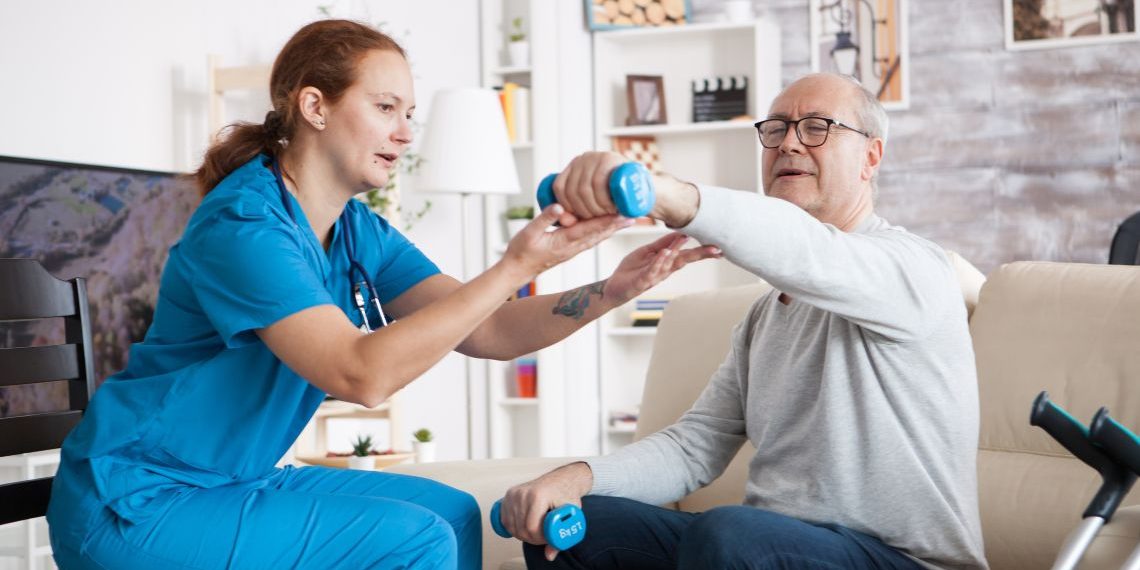Physical therapy, otherwise known as physiotherapy, is often known to be the first step in treating an injury. It helps the therapists identify specific areas of weakness, providing a range of benefits such as improving movement and function of the joints, providing pain relief, maintaining flexibility, etc. Physiotherapy is the treatment provided or offered to support and strengthen your overall well-being. In this blog, we look at the importance and types of physiotherapy, its benefits for patients’ physical health, the purpose of physiotherapy, and how it can be practiced at home.
TYPES OF PHYSICAL THERAPY
There are several kinds of physical therapy available depending on the patient’s condition and injury. This will help the therapists to diagnose the issue, helping them to create a personalized treatment plan for the patient. Some common types of physical therapy include:
- Pediatric physical therapy
Pediatric physical therapy is given to children, babies, and teens generally below 18, helping them to improve their mobility, and movement, strengthen their muscles, and ease pain. A physical therapy professional can help treat children for a variety of reasons, including nerve disorders, birth defects, muscle-related issues, delayed physical growth, etc. This type of therapy can be appropriate for parents wanting their children to correct their physical defects.
- Orthopedics
This therapy is generally provided to patients to treat them with temporary pain and conditions related to the musculoskeletal system, including muscles, tendons, bones, and ligaments, for patients recovering from orthopedic surgery. The treatment is given to improve their physical well-being such as enhancing balance, joint mobilization, physical therapy, etc.
- Geriatrics
Geriatric physical therapy deals with age-related disorders. The therapists generally focus on patients who are 65 or older struggling with strokes, arthritis, chronic disorders, etc. This helps the patients to improve their flexibility, cardiovascular conditions, body balance issues, diabetes, and many more. A geriatrician makes sure that the patients are treated well as elderly people need to be treated with a bit of sensitivity and patience.
- Neurological physical therapy
Neurological physical therapy focuses on providing treatment to individuals with neurological conditions. This can affect the performance of the brain, spinal cord, and nerves. The therapists treat these conditions by providing interventions that assist the patients in maintaining their movement and functionality. The interventions include stretching posture exercises, therapeutic activities, vestibular therapy, etc.
- Vestibular rehabilitation
This is a physical therapy that helps to manage balance, dizziness, motion sensitivity, and other conditions. The signs of vestibular disorders can include vertigo, dizziness, imbalance, and so on. Studies have shown that 75 percent of adults aged over 70 years have a balance impairment. It is necessary to have a thorough understanding of the patient’s vestibular system before starting the therapy. VRT (Vestibular Rehabilitation Therapy) can help patients overcome these conditions by exercising their eye and head movements, bending forward and picking up objects, sitting and standing exercises, etc.
YOGA AND PHYSICAL THERAPY
Yoga and physical therapy are both practices that provide assistance to recover from physical conditions. However, they can differ in their purpose and methodology. Yoga is a holistic approach focusing on improving physical, mental, and spiritual well-being. While physical therapy focuses only on the physical well-being. In many instances, the process of yoga and physical therapy involves the same process, where the therapists perform an assessment, come up with a treatment plan, and then begin with exercises to perform. The benefits of physical and yoga therapy include avoiding surgery, decreasing blood pressure, improving lung function, etc.
WHAT PHYSICAL THERAPY DOES FOR THE PATIENT?
Physical therapy plays a significant role by helping patients to enhance their physical function and good health. Physical therapy can aid in managing chronic conditions, preventing injuries and improving strength, stability, and fitness. By following the physical therapy techniques such as exercises, stretching, cold and heat therapy, massages, etc., the patients can get better with time and can enhance their quality of life.
WHAT IS THE PURPOSE OF PHYSIOTHERAPY?
Physiotherapy has many purposes; it helps patients to restore movement, improves mobility, and increases the strength and flexibility of muscles after an injury or disability, enhancing the ability to do daily tasks. It helps individuals through physical rehabilitation, improving movement after a stroke, easing pain, and recovering from a sports injury.
CAN PHYSICAL THERAPY BE DONE AT HOME?
Yes, physical therapy can be done at home. This can benefit in enhancing your mobility and overall health without having to leave your home. However, the patient might have to consult the physical therapist so that they can guide you with the exercises to be performed daily. But it is suggested to do physical therapy in the presence of your therapist, as they can recognize movement patterns and identify issues that you may not notice on your own.






Discussion about this post